According to Porch Group Media, 99% of consumers check their email daily. In contrast, 73% of marketers believe social media marketing is “somewhat” or “very effective” for business.
The debate between email and social media marketing is more relevant than ever. But which strategy holds the key to your business’s success?
Let’s dive into the showdown of email marketing vs social media and uncover the winning formula for your marketing strategy.
Table of Contents
- Overview of Email Marketing and Social Media Marketing
- Head-to-Head Comparison: Email Marketing vs Social Media Marketing
- Integration Strategies
- Best Practices for Email Marketing vs Social Media Marketing
- Tips for Choosing the Best Marketing Strategy for Your Business
- Strike the Right Chord
Overview of Email Marketing and Social Media Marketing
Let’s start with the overview to compare email marketing and social media marketing—
iEmail Marketing
Email marketing is a marketing method where you can list all email subscribers and send them emails regularly about your business announcements, bonuses, promotions, or newsletters.
You can also segment the list to target specific groups based on past interactions, preferences, or demographics. It allows you to create a more personalized and effective email marketing campaign for each segment’s unique needs and interests.
The Core Functionalities of Email Marketing are—
- Create and manage email lists according to subscriber information.
- Design and create compelling content for your email marketing campaign.
- Set up automated email sequences according to specific actions or events.
- Customize email content according to recipient data.
- Monitor email campaign performance using conversion, click-through, and open rates.
- Segment the email list based on behavior, demographics, or other criteria.
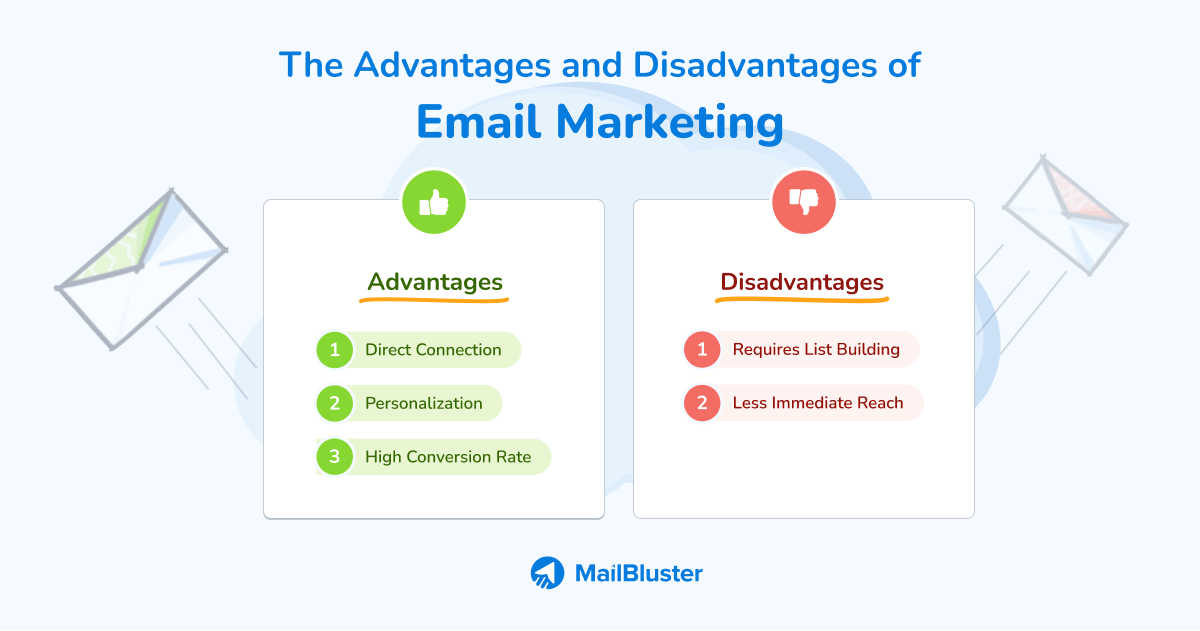
The Advantages of Email Marketing
🤩 You can reach clients and prospects right in their inboxes by email, which offers a direct channel of connection with the audience.
🤩 Email marketing allows personalized content, addressing recipients by name and customizing messages according to their preferences and behavior.
🤩 When done effectively, email marketing can result in high conversion rates as it targets a pre-qualified audience interested in your brand or its offerings.
The Disadvantages of Email Marketing
⚠️ Collecting a quality email list takes time and effort. Acquiring permission from individuals to send them emails is crucial, and this process can be challenging.
⚠️ Unlike other marketing processes, email campaigns may take time to reach a significant audience. People may not check their emails as frequently as on other platforms.
iiSocial Media Marketing
Social media is a medium for interaction between people through various platforms like Facebook, Instagram, X (formerly known as Twitter), etc.
But now, it’s no longer just a platform for connecting. It has evolved into a dynamic ecosystem, shaping how you communicate, consume information, and build communities.
As you see, social media has become an indispensable tool for personal expression, professional networking, and brand promotion, intertwining itself with our daily lives in ways that go beyond mere virtual connections.
Now, Let’s Catch up on The Overview of Different Social Media Platforms
Facebook:
- The largest social media platform.
- Supports various content types, including text, images, videos, and GIFs.
- Business-friendly features like Pages and targeted advertising.
Instagram:
- Focused on visual content, particularly images, and short videos.
- Popular among younger demographics.
- Emphasis on aesthetics and storytelling.
X (former Twitter):
- Microblogging platform with short-form content (tweets).
- Real-time updates and quick communication.
- Widely used for news, trends, and engagement.
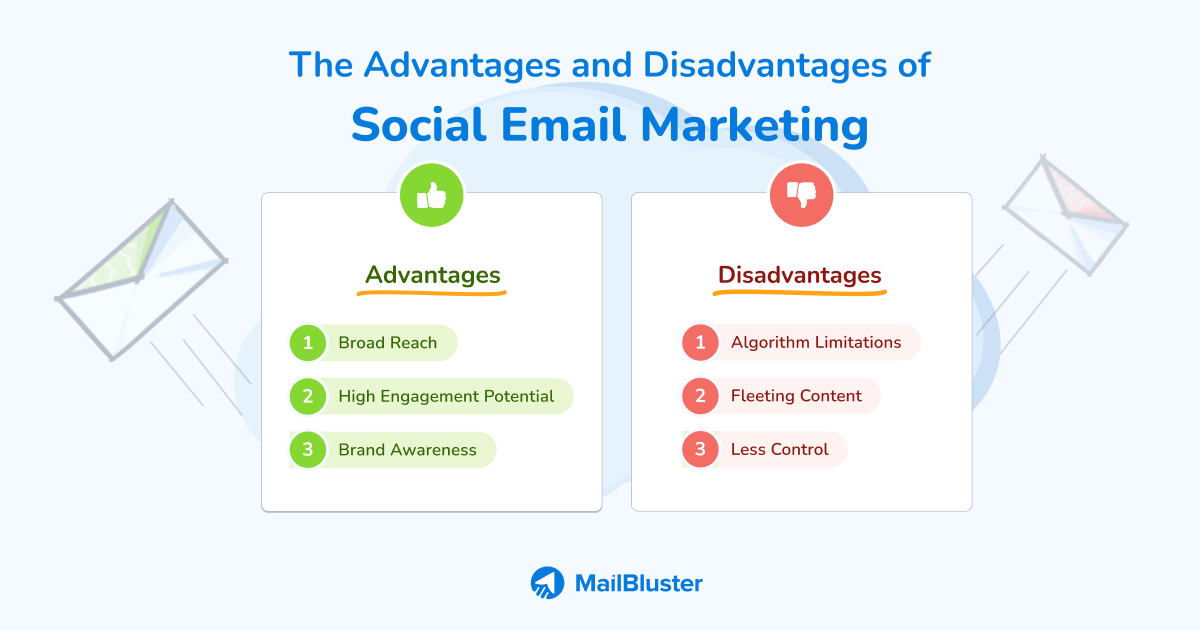
The Advantages of Social Media Marketing
🤩 Social media have a vast user base, which allows your company to reach a diversified audience.
🤩 Users actively engage with content through likes, comments, and shares, fostering interaction between your businesses and audience.
🤩 Social media is an effective platform for creating and increasing brand awareness, as content can quickly spread among users and reach a broad audience.
The Disadvantages of Social Media Marketing
⚠️ Each social media platforms use individual algorithms to determine the content that users see. Algorithm changes can impact your organic reach, requiring businesses to adapt your strategies.
⚠️ Content on social media platforms often has a short lifespan. Your posts may quickly become buried in users’ feeds, requiring consistent and timely posting to maintain visibility.
⚠️ Your business has limited control over the platform’s features and functionality. Algorithm changes and policy updates can affect how your content is distributed and perceived.
Head-to-Head Comparison: Email Marketing vs Social Media Marketing
Alright! Here comes the showdown between email and social media—the head-to-head comparison.
Despite having a few similarities, email and social media are not the same thing. Even no one can replace each other.
It’s time to see some real data to determine which is best for your business. Are you ready?
Targeted Reach: Which Channel Allows for More Precise Targeting?
Targeted reach is very important in marketing, especially when you are about to run an ad or campaign because it ensures your ads reach those who need it. This is why using precise targeting is a must for marketers.
And here comes the question: which channel will allow you to do the most precise targeting? Email or social?
Well, it is email marketing that allows you to target your targeted audience more precisely than social media. Why? Because it enables you to segment your audience by demographic, geographic, interest, and other criteria.
On the other hand, social media also allows you to target specifically. Still, the functions are not as advanced as email marketing.
So, in this round, email marketing wins! 🏆
Content Format: What Types of Content Work Best on Each Platform?
Content format is a big thing in marketing ads or campaigns. It carries the maximum responsibility of conversion. In recent days, people have been leaning toward more informative, entertaining, and inspiring content.
If I speak about millennials specifically, they mostly like content that is entertaining and informative at the same time.
Now, let’s see the content type of each platform. Email marketing content formats are text and image-based and contain only information. In contrast, social media content is more likely entertaining and engaging. It contains various multimedia elements like images, videos, and GIFs.
It is a win-win round as both content types are generally effective. 🎉
Engagement Potential: Where Can You Foster Deeper Connections With Your Audience?
Engagement potentiality plays a vital role in making the marketing effort successful. So, fostering a deeper connection with your audience is very important. Here is the debate where you can foster deeper connections. Let’s check it out—
In email marketing, after segmenting data, you can target your audience with personalized communication through one-to-one conversation. This helps you to nurture more profound connections.
Conversely, in social media marketing, you can connect with your audience through posts, likes, comments, and shares, which is most engaging nowadays.
However, both sides are playing kind of the same role here. So, this is also a win-win round. 🎉
Conversion Rates: Which Channel is More Likely to Drive Sales or Sign-Ups?
All kinds of marketing approaches share one common goal: to drive conversion and boost sign-ups, including email campaigns or social media efforts.
So, here, we will distinguish the channel that brings a higher conversion rate.
Email marketing influences 59% of customers in purchasing or sign-up decisions. In comparison, social selling can generate 45% of sales opportunities through social media. Among social platforms, Instagram emerges as the top performer for driving sales, according to HubSpot.
Based on real data, email marketing takes the lead in this comparison. 🏆
Long-Term ROI: Which Offers Better-Sustained Impact and Relationship Building?
ROI (Return on Investment) – a metric that measures the profits of an investment. To put it more simply, it is a mathematical measure in marketing that compares the return revenue to the investment cost.
In this term, marketers aim to recoup their marketing investment and generate additional revenue. Now let’s see which avenue, email or social media, provides better long-term impact and relationship building.
The average ROI from email marketing is $36 for every $1 spent. In comparison, social media ad campaigns boast an ROI of 250%.
It is apparent that you can target a vast community through social media. Gen Z and millennials are so into social media that ROI can skyrocket with effective targeting and engagement strategies.
Marketing Cost: Which Platform is More Expensive for Marketing?
Marketing expenses can add up quickly, but with strategic planning, you can cut down on costs and save some bucks. Let’s observe which platform, email or social media, is more expensive for marketing—
Email marketing requires paying for email service providers and possibly content creation. Conversely, social media marketing requires paying for advertising, engagement strategies, and content creation. If you opt for influencer marketing, expenses can escalate further.
However, it’s essential to consider the effectiveness of each platform in reaching your target audience and achieving marketing goals.
So, it is clear that email marketing tends to have lower costs compared to social media marketing, making it a cost-effective option. So here, email marketing wins. 🏆
We explored a lot in detail now; let’s take a quick tour of the comparison table to determine the differences between Email and Social media marketing from the image below—
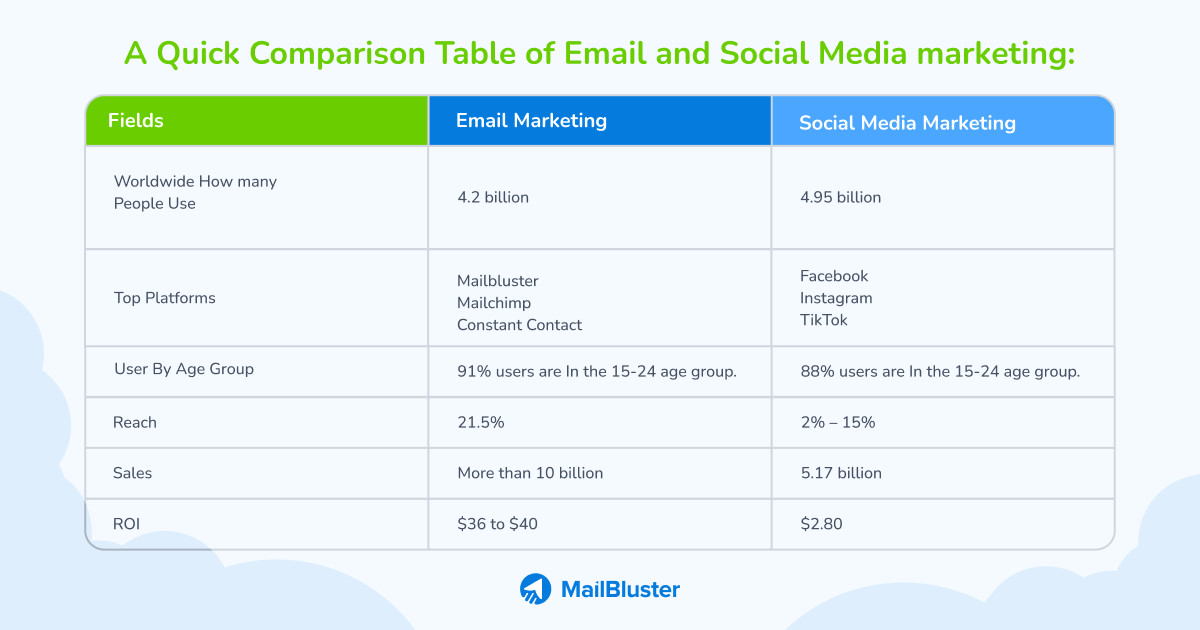
Now it is clear that social media marketing took the lead at some point, but overall, email marketing wins. 🏆🏆
Integration Strategies
Suppose you are using both marketing strategy, email and social. Now, what if you integrate both strategies with each other? You can generate leads from social to email and email to social.
While creating your newsletter template, you can add social media icons to link your accounts to drive traffic to social media from an email newsletter.
💡MailBluster provides amazing free built-in email templates for its users. It is organized according to UX (User Experience), including social media icons by default. You can also edit the built-in templates according to your ideas.
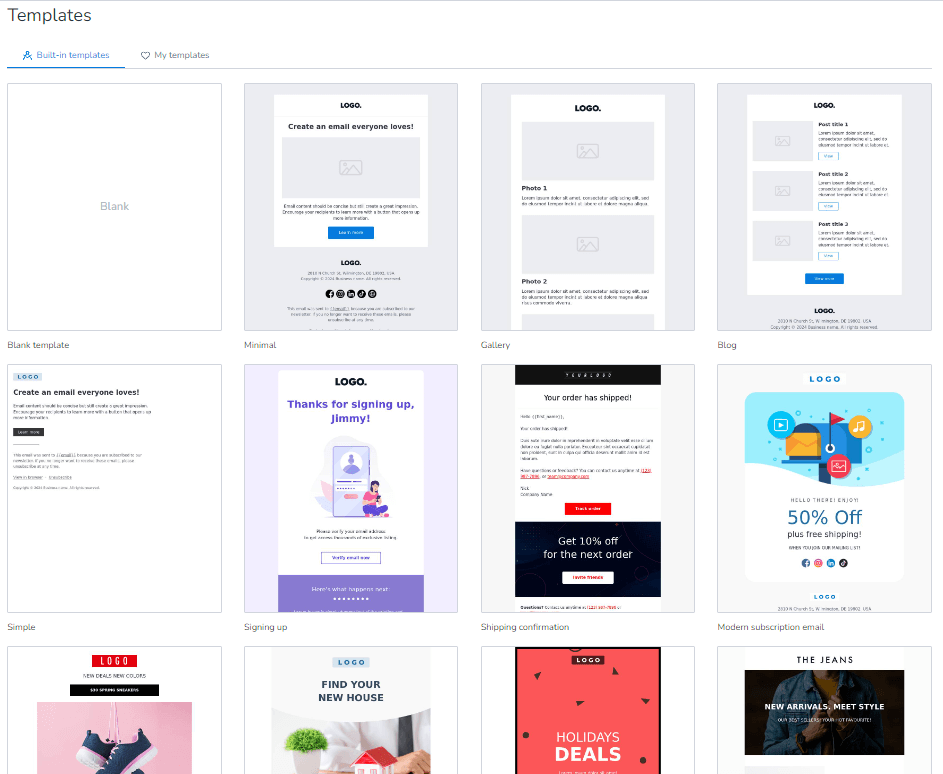
Similarly, you can run any ad or campaign on your social media and seek email registration, which will help your business get email leads for newsletters or the next campaign.
This cross-channel integration increases your reach and allows for a more cohesive and interconnected marketing strategy.
Best Practices for Email Marketing vs Social Media Marketing
Whether you are following email marketing or social media marketing, you must follow some best practices for using these marketing approaches. It will improve your marketing effort and drive more live results.
iEmail Marketing Best Practices
The best practices of email marketing are—
Using an Email Marketing Platform
In 2024, it is necessary to use an email marketing platform. Think about sending 1000 emails manually, which will take ages. This is how your email marketing campaign may ruin the impression.
So, that is why choose the best email marketing platform that can provide you with seamless campaign facilities with the most reasonable deals. Along with these, ensure the platform offers free templates for emails.
Our pick is MailBluster because it provides the most reasonable deals with amazing features.
Building and Segmenting Your Email List
Imagine sending bulk emails to the leads who don’t even need your products or services; it is such a waste. Build an email list with all the targeted leads to save your valuable time, effort, and money. Then, segment them according to the user journey map.
After creating and segmenting the list, you can target the exact customers who actually need you. And here, it increases the conversion rate.
CREATING or Choosing the Most Compiled Email Template
Just writing the email doesn’t work. You have to think about your email’s UI (User Interface) and UX (User Experience). The email template should be simple and concise. Hold the message in a bold and easy-to-catch position. You have to consider the template color and theme according to the campaign. And, most importantly, content with CTAs.
These help a recipient to read the email and take action seamlessly.
You will see a lot of free built-in email templates in Mailbuster.
Personalizing Your Email Content
72% of people respond immediately to emails that are directly to them (personalized).
Means what? There is a huge scoop for increasing conversion rates by personalizing email content.
How will you personalize email content? Most of the time, your email marketing platform maintains the personalization. So it is better to choose the best platform to do it seamlessly so that someone named John doesn’t receive mail that addresses him, Isabella.
It also can be counterproductive. So you have to take care of personalized email.
Scheduling Emails at the Right Time
Sending emails at the right time is the most important in email marketing. Consider the times when your target customer is most likely to check their emails.
Data shows that morning time (9 to 11 AM) is the best time to send emails as people check their email on the very first day of their day. But if you think morning time is not a good time to go, you can pick the second best time for email—noon (1 to 2 PM).
Also, if you want to know which days would be better for sending emails—it is Tuesday and Thursday. Wednesday also can be a strong contender.
Beyond these, there are more practices that you should follow to run a successful email campaign—
💡Best Practices of Email Marketing in 2024: A Complete Guide
iiSocial Media Marketing Best Practices
The best practices of social media marketing are—
Understand Your Target Audience
To do social media marketing, understanding the target audience is very important. Their interests, pain points, expectations, demographics, etc., because this information will help you organize your content.
You can make personalized content to get an impression by understanding your audience well. This will help your business to achieve a better conversion rate.
Choose the Right Platform
Not all platforms are for all kinds of businesses. Every platform has its own algorithms, such as being unable to sell clothes on LinkedIn as you can on Facebook and Instagram.
So, determine which platform your audience gathers most. Then, research the target market and launch your business profile on that platform.
Choosing one mindlessly is like throwing money down the drain without determining the best platform for your business.
Create Engaging Contents
While starting to post your valuable content on social media, research what your competitors are posting and why they are getting so much engagement. And then create your engaging content.
Craft your content to be as engaging as your audience, compelling them to click the ‘follow’ button. Once they organically engage in your content, the social media platform algorithm will work in your favor.
So, it is crucial to pay attention to your engaging content.
Keep the Engagement
You can assess engagement based on the platforms. For Facebook, you can measure it by likes, comments, and shares. On Instagram, consider saved posts, and for Pinterest, focus on pinned posts.
While playing on social media, measuring your engagement regularly is a must. Keep tracking, and jot down why you’re getting engagements and the reasoning for losing engagements. It will help you to rearrange your social media marketing strategy.
These practices will help you to a great extent to fulfill your marketing approach.
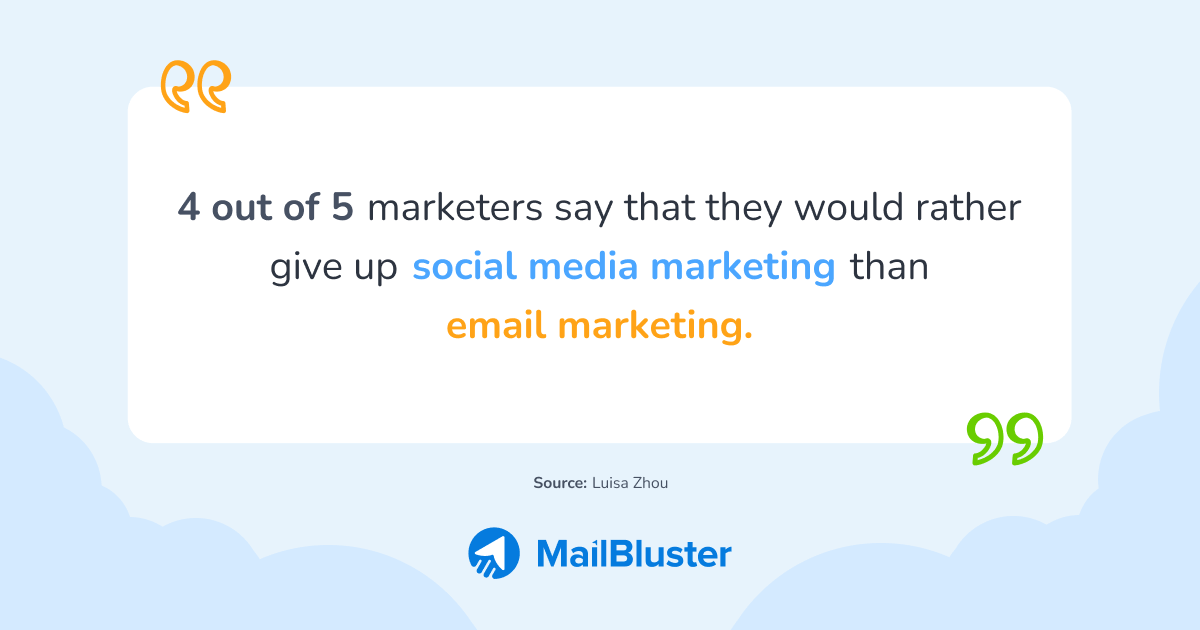
Tips for Choosing the Best Marketing Strategy for Your Business
Choosing the best marketing strategy for your business is a must, as it depends on the possibility of your business’s success. To select a perfect marketing strategy for your business, among social and email, you need to figure out some factors, such as your target audience, industry, budget, and goals. Also, you will need to research your market very well to understand which strategy will fit your business well.
However, here I am sharing some quick tips to help you determine your business’s best marketing strategy.
- For an e-commerce business, you must follow both marketing strategy, email, and social media. Why? Both are effective for e-commerce businesses as social media will showcase your product, and email can promote them.
- Local businesses like salons and restaurants—only social media marketing is enough. Local businesses’ customers mostly rely solely on social media platforms like Facebook, Instagram, etc.
- Email marketing is the best performer for B2B (business-to-business) companies because B2B companies often have longer sales cycles and require nurturing leads over time. And email marketing can send targeted content, industry insights, case studies, and event invitations directly to decision-makers’ inboxes.
- Both social and email marketing can be best practices for SaaS (Software as a Service) businesses. As SaaS businesses need to train their users to onboard with new products and features, email marketing plays a crucial role in providing assistance. On the other hand, for user-generated content and use cases, social media can help.
- B2C (business to consumers) businesses—both email and social media marketing are effective. Email marketing to B2C allows personalized offers and newsletters to go directly to inboxes, fostering loyalty. Social media showcases products, engages with visual content, and drives sales through targeted ads.
So, ultimately, without any prior reason, you can not avoid email marketing. I recommend using MailBluster as your go-to email marketing platform to supercharge your email marketing campaign.
Strike the Right Chord
In the clash of titans, email marketing vs social media marketing, the verdict isn’t about choosing one over the other but striking the right balance.
Remember, it’s not about choosing sides; it’s about striking the right chord to orchestrate success in the ever-evolving landscape of digital marketing.


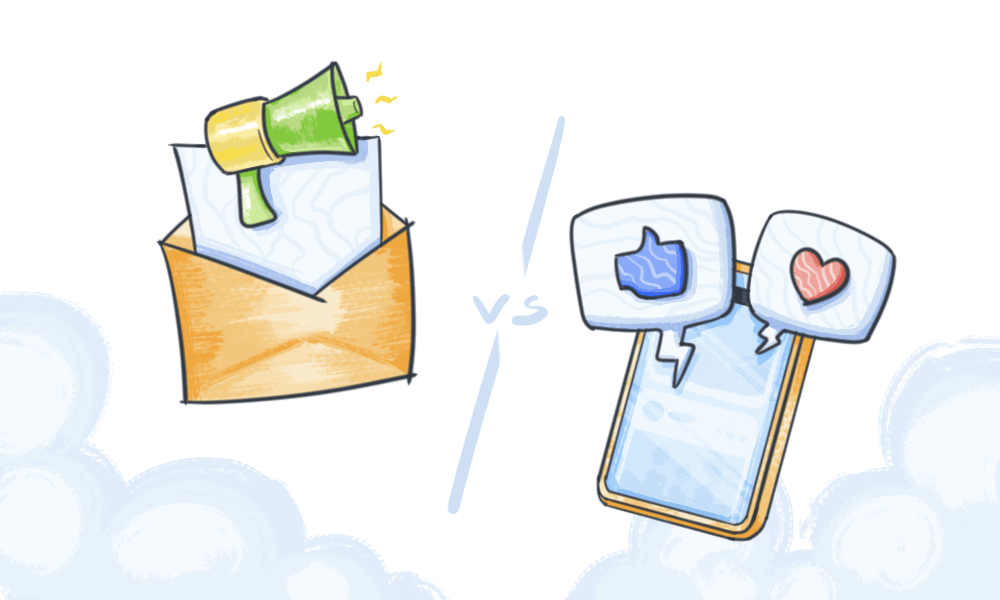
 Contents
Contents
